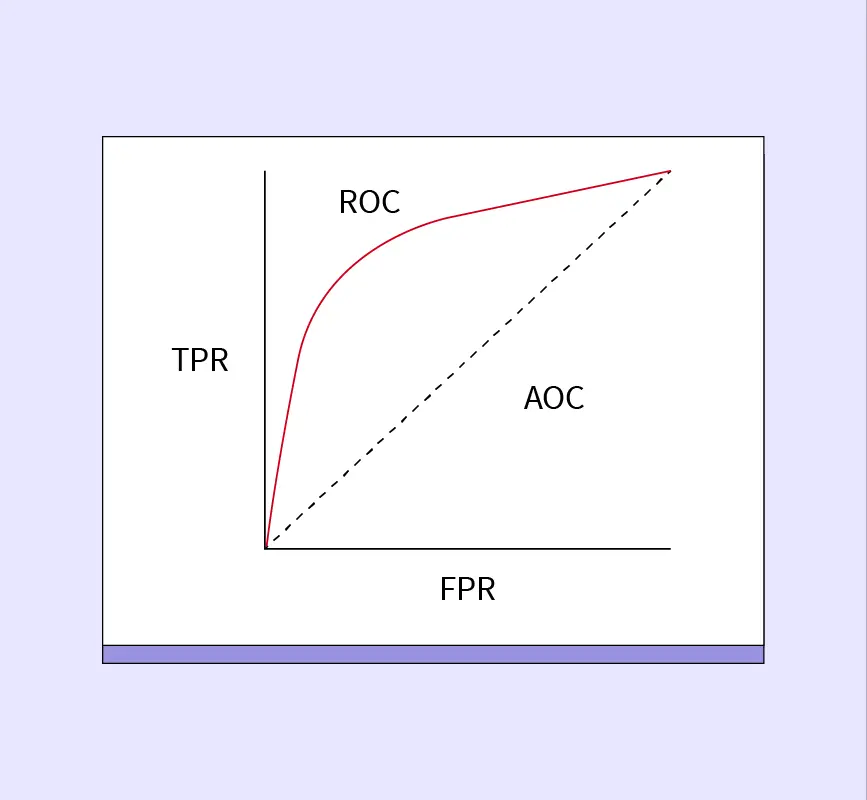A data warehouse is a centralized repository designed to store and manage large volumes of structured data gathered from multiple sources. It serves as the foundation for advanced analytics, enabling organizations to query, analyze, and extract valuable insights from their data. Unlike traditional operational databases, which are optimized for real-time transactional processing (OLTP), data warehouses are tailored for analytical processing (OLAP), making them essential for strategic decision-making.
The primary purpose of a data warehouse is to consolidate disparate data sources into a unified structure, allowing businesses to derive insights from historical and current data. By transforming raw data into an organized format, data warehouses empower decision-makers with actionable intelligence. They support complex queries, trend analysis, and predictive modeling, which are critical for industries such as finance, retail, healthcare, and technology. Key characteristics of a data warehouse includes:
- Scalability: Data warehouses are built to handle ever-growing datasets, accommodating the increasing volume of business data.
- Data Integration: They consolidate information from multiple sources, such as CRM systems, ERP platforms, and external databases, ensuring consistency and accuracy.
- Time-Variant Data Storage: Unlike operational databases that store real-time data, data warehouses maintain historical data, enabling long-term trend analysis.
- Non-Volatile Storage: Once data is stored in a data warehouse, it remains unchanged, providing a stable and reliable repository for analytics.
Why Do We Need a Data Warehouse?
A data warehouse is essential for consolidating data from multiple sources into a unified system, enabling organizations to perform comprehensive analysis. It solves the challenge of fragmented data by eliminating data silos, where information is stored in isolated systems or departments. This consolidation ensures that businesses have a single source of truth, promoting consistency, accuracy, and alignment across teams and processes.
With all data integrated into a centralized repository, organizations can achieve enhanced business intelligence, enabling them to identify trends, uncover opportunities, and generate actionable insights. A data warehouse also improves the quality of decision-making by providing historical and real-time data in a structured format. Decision-makers can analyze patterns, forecast outcomes, and make informed choices that align with strategic goals. Additionally, data warehouses are instrumental in optimizing operations, including tasks such as forecasting demand, improving inventory management, and streamlining workflows.
Example: A retail company can use a data warehouse to consolidate sales data from multiple stores and e-commerce platforms. This enables better demand forecasting, targeted marketing, and improved inventory allocation, resulting in higher customer satisfaction and profitability.
Benefits of a Data Warehouse
A data warehouse offers numerous benefits that help organizations manage their data effectively and derive actionable insights. Here are the key advantages:
1. Improved Decision-Making
A data warehouse provides fast access to historical and integrated data, enabling organizations to perform comprehensive trend analysis and forecasting. Decision-makers can rely on these insights to make well-informed strategic choices, such as identifying market trends, optimizing product offerings, or planning resource allocation. With real-time analytics capabilities, businesses gain a competitive edge by responding quickly to changes in their environment.
2. Enhanced Data Quality
By consolidating data from multiple sources into a single repository, data warehouses ensure standardized formats and consistent integration. This eliminates errors and redundancies, enhancing the reliability and accuracy of data. Clean and organized data enables analysts and stakeholders to trust the insights derived from it, improving the overall quality of decision-making processes.
3. Scalability
As organizations grow, the volume of data they generate also increases. A data warehouse is designed to scale seamlessly, accommodating the growing data needs of expanding businesses. Whether dealing with terabytes or petabytes of data, modern data warehouse solutions, such as cloud-based platforms, ensure high performance and availability without compromising efficiency.
4. Time-Efficiency
Data warehouses streamline querying and reporting processes by organizing data in structured formats optimized for analytics. Analysts and stakeholders can retrieve insights quickly without sifting through fragmented data sources. This time-saving capability allows organizations to focus on strategic initiatives instead of spending excessive time on data preparation and analysis.
5. Integration with BI Tools
Data warehouses are seamlessly compatible with popular Business Intelligence (BI) tools, such as Tableau, Power BI, and Looker. This integration enables advanced data visualization, interactive dashboards, and automated reporting, making it easier for organizations to interpret and act on their data.
Data Warehouse Architecture
Data warehouse architecture is the backbone of a well-functioning data warehouse, ensuring efficient data integration, storage, and retrieval. It consists of key components and different architectural types designed to meet varying organizational needs.
Components of Data Warehouse Architecture
- Data Sources: Data warehouses collect information from various data sources, such as OLTP systems (transactional databases), external data feeds, or IoT devices. These sources provide raw data that needs to be integrated into a centralized system for analysis.
- ETL Process: The Extract, Transform, Load (ETL) process is crucial for cleansing, transforming, and preparing raw data for storage.
- Extract: Retrieves data from multiple sources.
- Transform: Standardizes, cleanses, and formats data to maintain consistency.
- Load: Stores the processed data into the data warehouse repository.
- Data Storage: The central repository is the heart of the architecture, storing data in a structured format. This includes:
- Fact Tables: Contain quantitative data, such as sales or revenue.
- Dimension Tables: Provide context to facts, such as customer or product details.
- Presentation Layer: This layer allows users to access and interact with the data through BI tools like Power BI or direct querying. It transforms complex datasets into easy-to-understand visualizations and reports, aiding decision-making.
Types of Data Warehouse Architectures
- Single-Tier Architecture: A simplified, centralized structure where all functions—storage, processing, and querying—occur within a single layer. While cost-effective, it’s limited in scalability and performance.
- Two-Tier Architecture: Introduces a data mart layer, enabling department-specific analysis. However, it may face challenges with real-time data integration.
- Three-Tier Architecture: The most common and efficient architecture, it separates:
- Storage Layer: Centralized repository for all data.
- Processing Layer: Handles ETL and data transformations.
- Access Layer: Provides end-users with querying and visualization tools.
Data Warehouse vs. Database
Here’s a detailed comparison between data warehouses and traditional databases, highlighting their key differences:
| Aspect | Data Warehouse | Database |
| Purpose | Designed for analytical processing (OLAP) to support decision-making, trend analysis, and forecasting. | Built for transactional processing (OLTP) to handle real-time operations and routine tasks like order processing. |
| Data Storage | Stores historical data to provide a long-term view of business performance. | Stores current data for day-to-day operations, ensuring real-time updates and immediate access. |
| Data Integration | Consolidates data from multiple sources into a unified structure. | Primarily deals with a single data source or application-specific data. |
| Performance | Optimized for complex queries, such as aggregate functions, joins, and advanced analytics. | Optimized for real-time operations, ensuring fast execution of simple queries. |
| Data Updates | Data is non-volatile—once loaded, it is not frequently updated, ensuring data stability for analytics. | Data is frequently updated as transactions occur, reflecting real-time changes. |
| Schema Design | Uses denormalized schemas (e.g., star or snowflake schemas) for faster querying and analysis. | Employs normalized schemas to reduce redundancy and maintain data integrity. |
| Users | Designed for analysts, managers, and decision-makers who need insights for strategic planning. | Designed for operational staff, such as sales teams or customer service agents, who require real-time data access. |
| Query Type | Handles analytical queries, such as “What were the sales trends over the last five years?” | Handles transactional queries, such as “What is the current stock of a product?” |
| Scalability | Built to scale for handling large volumes of data and historical trends. | Focuses on supporting the current workload with limited historical data. |
| Tools and Technologies | Integrates with BI tools like Tableau, Power BI, and Looker for visualization. | Works with application-level systems like CRM or ERP for operational needs. |
Types of Data Warehouses
Data warehouses come in different types, each designed to address specific organizational needs. Here’s an overview of the three main types:
1. Enterprise Data Warehouse (EDW)
An Enterprise Data Warehouse (EDW) serves as a centralized repository that stores and organizes data from multiple sources across the entire organization.
- Purpose: Facilitates organization-wide analytics and supports strategic decision-making.
- Key Features:
- Stores historical data to enable long-term trend analysis.
- Integrates data from diverse systems such as ERP, CRM, and financial databases.
- Ensures consistency and a single source of truth for enterprise-wide reporting.
Example: A multinational corporation uses an EDW to analyze global sales performance across all regions and business units.
2. Operational Data Store (ODS)
An Operational Data Store (ODS) is a temporary repository used for operational reporting. It integrates data from multiple transactional systems to provide near real-time insights.
- Purpose: Focuses on short-term, operational needs rather than long-term trend analysis.
- Key Features:
- Provides up-to-date data for quick decisions.
- Acts as an intermediary between transactional systems and the data warehouse.
Example: A hospital uses an ODS to monitor patient admissions and resource allocation in real time.
3. Data Mart
A Data Mart is a subset of a data warehouse, designed to meet the specific analytical needs of a department or business unit.
- Purpose: Supports targeted analysis for functions like marketing, finance, or operations.
- Key Features:
- Smaller in scale compared to an EDW.
- Easier to implement and manage for department-specific use cases.
Example: The marketing department uses a data mart to analyze campaign performance and customer segmentation.
Example Applications of Data Warehousing
Data warehousing plays a pivotal role across industries, enabling organizations to store, analyze, and utilize data for strategic decision-making. Here are some real-world applications across key sectors:
Retail and E-Commerce
In retail and e-commerce, data warehousing plays a crucial role in understanding customer behavior and optimizing inventory management. By analyzing historical sales data, businesses can forecast demand and prepare for seasonal trends, ensuring products are available when needed. Customer segmentation, derived from purchasing patterns, allows companies to develop personalized marketing strategies, improving customer satisfaction and driving revenue. For instance, Amazon leverages data warehousing to streamline inventory management and provide tailored product recommendations to its users.
Finance
The finance sector relies heavily on data warehousing for fraud detection and risk management. By examining transaction patterns, financial institutions can identify anomalies that may signal fraudulent activities, enabling them to take timely preventative measures. Risk management models utilize historical and real-time data to evaluate creditworthiness and anticipate market shifts, helping banks and investment firms make informed decisions. A common application includes analyzing customer data to assess lending risks and secure financial transactions.
Healthcare
In healthcare, data warehousing supports patient care and operational efficiency. By consolidating patient records, diagnostic results, and treatment histories, healthcare providers can develop personalized care plans that cater to individual needs. Additionally, data analysis helps predict hospital admission trends, enabling better allocation of staff, equipment, and resources. Hospitals frequently use data warehouses to ensure high-risk patients receive prompt and appropriate care.
Marketing
Marketing teams use data warehouses to enhance campaign effectiveness and personalize customer experiences. By analyzing performance metrics, businesses can assess the impact of marketing campaigns and refine future strategies. Data-driven insights allow marketers to tailor offers and messaging to specific customer segments, increasing engagement and conversion rates. Retailers often rely on data warehouses to evaluate the success of promotions and optimize advertising spend.
Supply Chain Management
In supply chain management, data warehousing facilitates real-time inventory tracking and logistics optimization. Businesses can monitor stock levels to prevent shortages or overstocking, ensuring smooth operations. Delivery routes and schedules can also be analyzed to minimize costs and improve efficiency. For instance, Walmart uses data warehouses to streamline its supply chain, delivering products quickly and maintaining customer satisfaction.
Advantages of Data Warehousing
Data warehousing offers several key benefits that make it an essential tool for organizations looking to leverage their data effectively:
- Centralized Data for Faster Insights: By consolidating data from various sources into a unified repository, data warehouses enable quick access to comprehensive insights. This eliminates data silos and supports faster decision-making.
- Enhanced Data Security and Governance: Robust security measures and compliance controls ensure that sensitive information is protected. Data warehouses provide organizations with the tools to enforce access restrictions and meet regulatory requirements.
- Supports Advanced Analytics: Data warehouses facilitate predictive modeling, trend analysis, and other advanced analytics by storing historical data in a structured and accessible format. This empowers businesses to identify patterns, forecast outcomes, and make strategic, data-driven decisions.
These advantages highlight the critical role of data warehousing in driving efficiency, improving security, and enabling sophisticated analytics for organizational success.
Disadvantages of Data Warehousing
While data warehousing offers numerous advantages, it also comes with some challenges that organizations must address:
- High Initial Cost of Setup and Maintenance: Implementing a data warehouse requires significant investment in hardware, software, and skilled personnel. Ongoing maintenance and upgrades further add to the financial burden, especially for smaller organizations.
- Complexity in Designing and Managing ETL Processes: The Extract, Transform, Load (ETL) process is crucial for preparing data for analysis. However, designing and managing ETL workflows can be highly complex, requiring specialized expertise to ensure data accuracy and consistency.
- Scalability Challenges in Traditional On-Premises Setups: While modern cloud-based solutions offer scalability, traditional on-premises data warehouses often face limitations when handling increasing data volumes. Scaling up such systems requires additional infrastructure and resources, leading to higher costs and longer implementation times.
Despite these drawbacks, organizations can mitigate challenges through careful planning, adopting cloud-based solutions, and leveraging expertise to optimize their data warehouse implementations.
Cloud Data Warehouses: The Modern Approach
Cloud-based data warehouses, such as Snowflake, Amazon Redshift, and Google BigQuery, have transformed how organizations manage and analyze data. These platforms leverage distributed computing and cloud infrastructure to offer highly scalable, cost-effective, and efficient solutions tailored to modern business needs.
One of the most significant advantages of cloud data warehouses is their scalability. Unlike traditional on-premises systems, cloud solutions allow organizations to dynamically adjust storage and compute resources based on demand. This ensures that businesses can handle growing data volumes seamlessly without requiring large upfront investments.
Another key benefit is cost-efficiency. With a pay-as-you-go pricing model, cloud data warehouses eliminate the need for costly hardware and maintenance expenses. Organizations only pay for the resources they use, making these systems accessible to businesses of all sizes.
Additionally, cloud data warehouses require zero maintenance from the user’s side. Service providers handle infrastructure management, software updates, and backups, enabling organizations to focus on extracting insights and driving innovation rather than managing complex IT systems.
Conclusion
Data warehouses serve as a cornerstone for modern business environments, providing a centralized platform to store, integrate, and analyze large volumes of data. By enabling organizations to consolidate disparate data sources, they facilitate comprehensive analytics, improve decision-making, and support long-term strategic planning.
The benefits of data warehouses, including enhanced data quality, scalability, and integration with advanced analytics tools, highlight their importance in driving data-driven strategies. As businesses increasingly rely on insights for competitive advantage, data warehouses play a critical role in optimizing performance and fostering innovation.
In today’s data-driven world, investing in a robust data warehousing solution is essential for organizations aiming to achieve operational excellence and sustained growth.
References:


